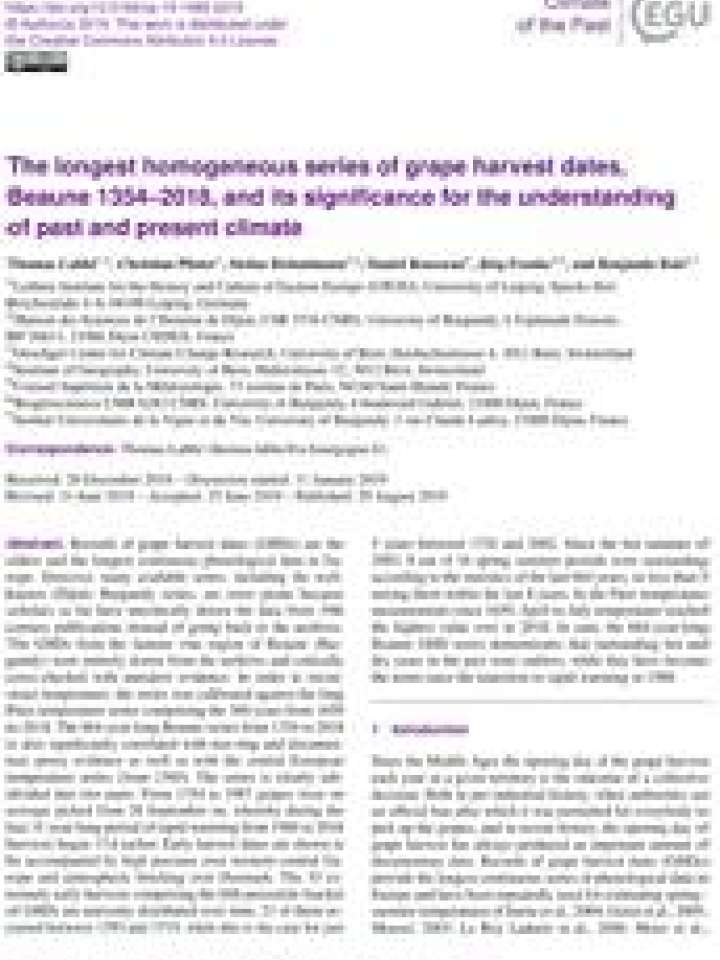The longest homogeneous series of grape harvest dates, Beaune 1354–2018, and its significance for the understanding of past and present climate
Records of grape harvest dates (GHDs) are the oldest and the longest continuous phenological data in Europe. However, many available series, including the well-known (Dijon) Burgundy series, are error prone because scholars so far have uncritically drawn the data from 19th century publications instead of going back to the archives. In this report, the GHDs from the famous vine region of Beaune (Burgundy) were entirely drawn from the archives and critically cross-checked with narrative evidence. In order to reconstruct temperature, the series was calibrated against the long Paris temperature series comprising the 360 years from 1659 to 2018. The 664-year-long Beaune series from 1354 to 2018 is also significantly correlated with tree-ring and documentary proxy evidence as well as with the central European temperature series (from 1500). The series is clearly subdivided into two parts. From 1354 to 1987 grapes were on average picked from 28 September on, whereby during the last 31-year-long period of rapid warming from 1988 to 2018 harvests began 13 days earlier.
Early harvest dates are shown to be accompanied by high pressure over western–central Europe and atmospheric blocking over Denmark. The 33 extremely early harvests comprising the fifth percentile bracket of GHDs are unevenly distributed over time; 21 of them occurred between 1393 and 1719, while this is the case for just 5 years between 1720 and 2002. Since the hot summer of 2003, 8 out of 16 spring–summer periods were outstanding according to the statistics of the last 664 years, no less than 5 among them within the last 8 years. In the Paris temperature measurements since 1659, April-to-July temperature reached the highest value ever in 2018. In sum, the 664-year-long Beaune GHD series demonstrates that outstanding hot and dry years in the past were outliers, while they have become the norm since the transition to rapid warming in 1988.
Explore further
